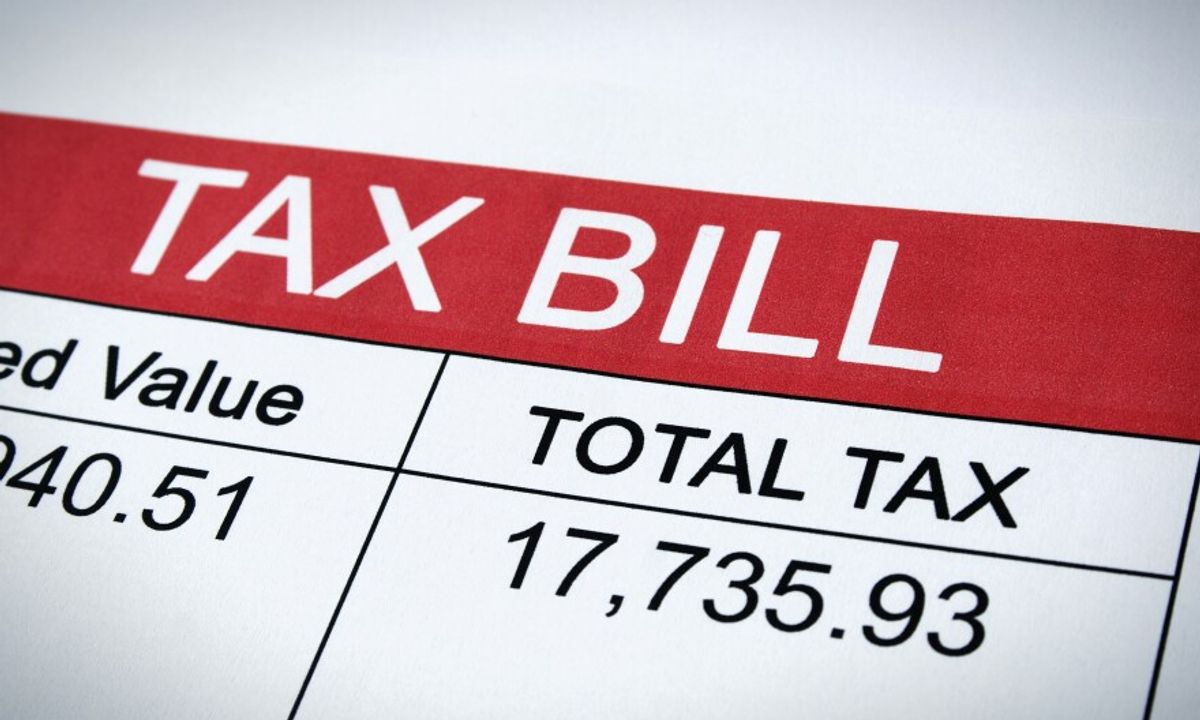Understanding how to calculate mill rate property tax is crucial for homeowners who want to estimate their annual tax obligations. The mill rate, also known as the millage rate, is the amount of tax payable per dollar of the assessed value of a property. This article will break down the process into simple steps, providing homeowners with the knowledge needed to compute their property taxes accurately.
Key Takeaways
- Millage rates, expressed in mills, are used to calculate property taxes—one mill equals $1 of tax per $1,000 of taxable property value.
- To determine property tax, multiply the taxable value of the property by the millage rate set by various taxing authorities.
- Taxable value and millage rates can be found on property tax statements or by contacting local assessor’s offices.
- Additional charges, such as administration fees, special assessments, and collection fees, may apply to the total tax bill.
- Online resources, calculators, and contacting local offices are helpful tools for accurately calculating mill rate property taxes.
Breaking Down the Millage Mystery


Understanding the Basics of Millage Rates
Let’s dive right into the heart of property taxes: the millage rate. The mill rate is the amount of tax payable per dollar of the assessed value of a property. It’s all about those mills, folks. A single mill represents one-thousandth of a dollar, or $1 of tax for every $1,000 of taxable value. So, when we’re talking about calculating our property taxes, we’re essentially doing some simple math: multiplying the taxable value of our property by the millage rate.
To put it in perspective, here’s a quick example. Imagine your local millage rate is 15 mills and your property’s taxable value is $100,000. Your property tax would be calculated like this:
| Taxable Value | Millage Rate (mills) | Tax Owed |
|---|---|---|
| $100,000 | 15 | $1,500 |
Remember, the millage rate can vary depending on where you live, so it’s crucial to find out the specific rate for your area.
Finding the millage rate for your property can be as easy as checking your property tax statement or giving a quick call to your local assessor’s office. They’re the ones with the answers, and they’re there to help us navigate these waters.
Finding Your Local Millage Rate
Alright, let’s get down to business and find out what your local millage rate is. This little number is crucial because it’s going to tell us how much you’ll be shelling out in property taxes. First things first, check your property tax statement; it’s usually right there in black and white. If it’s playing hide and seek, give your local assessor’s office a ring. They’re the folks who can give you the lowdown on your millage rate.
Here’s a quick rundown on where to look:
- Your property tax statement should list the millage rate.
- If it’s not there, contact your local city, township, or village assessor’s office.
Remember, the millage rate is the amount per $1,000 of property value that you’ll pay in taxes. So, if your rate is 10 mills, that’s $10 for every $1,000 of assessed value.
Now, let’s say you’ve got your rate, but you want to see how it stacks up. Check out this table from the Department of Revenue for a bit of context:
| Taxing Entity | Millage Rate | Taxable Value | Tax |
|---|---|---|---|
| Your City or Township | 5 mills | $50,000 | $250 |
| Your Local Schools | 18 mills | $50,000 | $900 |
Keep in mind, the average county and municipal millage rate is around 30 mills. But remember, this can vary widely, so don’t take it as gospel for your specific situation.
Examples to Illustrate Millage Calculations
Alright folks, let’s put this millage rate thing into practice. Imagine your local city has a millage rate of 10 mills. If your home’s taxable value is $50,000, your property tax would be a neat $500. Here’s the simple math: (10 / 1,000) x $50,000 = $500. Easy, right?
But wait, there’s more to it. Different entities can levy taxes, so your total tax bill might include charges from the city, schools, and other authorities. Let’s break it down with an example:
| Taxing Entity | Millage Rate | Taxable Value | Tax |
|---|---|---|---|
| Your City or Township | 5 mills | $50,000 | $250.00 |
| Your Local Schools | 18 mills | $50,000 | $900.00 |
| Michigan’s State Ed Tax | 6 mills | $50,000 | $300.00 |
Add those up, and you’re looking at a total of $1,450 before any special assessments or fees. Remember, the millage rate is just the starting point.
Keep in mind, the millage rate is defined as the dollars assessed for each $1,000 of value; one mill is one dollar per $1,000 of assessed value. So, when you’re crunching those numbers, make sure you’re converting mills into a decimal by dividing by 1,000.
Crunching the Numbers: Calculating Your Property Tax


Determining Your Property’s Taxable Value
Alright folks, let’s dive into figuring out what your property’s taxable value (TV) is all about. It’s the number that, when multiplied by the millage rate, gives us the amount of property tax we owe. The trick is to understand that the TV is often less than the property’s assessed value. But, when a property changes hands, the TV gets ‘uncapped’ and matches the assessed value for the following tax year.
Here’s a quick rundown on how the TV is calculated:
- Start with last year’s TV.
- Subtract any losses.
- Add the lower of 5% or the rate of inflation.
- Include any new additions to the property.
Remember, this is a simplified version of the process. Your local tax authority might have additional steps or methods for calculating the TV.
Now, let’s say you’ve got all the numbers. Here’s how you’d put them together in a calculation:
| Last Year’s TV | Losses | Inflation/5% | Additions | New TV |
|---|---|---|---|---|
| $100,000 | $2,000 | $5,000 | $3,000 | $106,000 |
This table is just an example, so make sure to plug in your own figures to get your property’s TV. Once you’ve got that, you’re ready to move on to the next step: applying the millage rate!
Applying the Millage Rate to Your Taxable Value
Once we’ve got our property’s taxable value in hand, it’s time to do some math. We’ll apply the millage rate to figure out what we owe. Remember, a millage rate is just a fancy way of saying how much tax you’ll pay per thousand dollars of taxable value.
Here’s a simple breakdown of how it works:
- Divide the millage rate by 1,000.
- Multiply that number by your property’s taxable value.
For example, if our local millage rate is 15 mills and our property’s taxable value is $100,000, we’d calculate our taxes like this:
- (15 ÷ 1,000) x $100,000 = $1,500
That’s $1,500 in property taxes we’d need to budget for.
Keep in mind, this is just the base tax. We might have other fees or special assessments to consider, which can change the final amount we need to pay.
It’s pretty straightforward, but if you’re still feeling a bit lost, don’t sweat it. We can always reach out to our local assessor’s office or use an online calculator to help us out.
Adding Up Your Total Tax Bill
Alright, we’ve crunched the numbers, and now it’s time to see what the damage is. Adding up your total tax bill might feel like the final boss in a video game, but it’s actually pretty straightforward. Let’s say the assessed value of your property is $40,000, and you’re lucky enough to have no exemptions to worry about. With a tax rate of 7.9280, you’d multiply $40,000 by 7.9280 to get 317120, then divide by 100 to land at a tax bill of $3,171.20.
Remember, the formula is simple: Assessed Value x Millage Rate / 100 = Your Tax Bill.
Now, let’s break it down in a table to see how each part contributes to the total:
| Component | Calculation | Amount |
|---|---|---|
| Assessed Value | $40,000 | |
| Millage Rate | x 7.9280 | |
| Preliminary Total | = 317120 | |
| Divide by 100 | / 100 | |
| Total Tax Bill | $3,171.20 |
So there you have it, folks. We’ve navigated the murky waters of millage rates and come out the other side with a clear view of our tax bill. It’s not always fun, but at least now we know where our money’s headed.
Beyond the Basics: Additional Charges and Fees


Unpacking the Administration Fee
Alright folks, let’s dive into the administration fee that might show up on your property tax bill. This little extra is not just there to annoy you – it actually covers some real costs. Think of it as the price for the convenience of having your tax bill managed and sent out to you. It’s like a service charge for all the behind-the-scenes work that goes into keeping the tax system running smoothly.
Now, this fee is usually a percentage of your total property tax. For example, if your property tax is $500, and there’s a 1% administration fee, you’ll be paying an extra $5. It’s not a huge amount, but it’s something to be aware of when budgeting for your total tax bill.
Remember, the administration fee is there to help cover the costs of processing your property tax bill – from printing to postage.
Here’s a quick breakdown of how this might look:
| Property Tax | Administration Fee Rate | Administration Fee Amount |
|---|---|---|
| $500 | 1% | $5 |
Keep in mind that this fee can vary depending on where you live, so it’s always a good idea to check with your local tax authority for the exact figures. And hey, if you’re feeling a bit overwhelmed by all these fees and charges, don’t worry – we’re all in this together!
Special Assessments and How They Affect You
When we’re talking about property taxes, we can’t ignore special assessments. These are additional charges that can be levied on your property for specific purposes, like a new sewer system or road improvements. Unlike regular property taxes, which are based on the millage rate times your property’s taxable value, special assessments are often a flat fee. They can significantly increase your total tax bill, especially if they’re for a big-ticket infrastructure project.
Here’s a quick breakdown of how a special assessment might look on your bill:
| Item | Special Assessment Cost |
|---|---|
| Sewer Project | $700.00 |
Remember, these costs are on top of your regular property taxes. And while they can be a pain, they’re also investments in our community’s infrastructure, which can lead to improved property values over time.
It’s crucial to keep an eye out for any notices about upcoming special assessments. They can sneak up on you, and it’s better to be prepared than surprised.
If you’re curious about how market conditions affect special assessments, check out this [PDF] Frequently Asked Questions – Special Assessments. It dives into the nitty-gritty, like whether they’re more appropriate as a property tax or a sales tax on real estate transactions.
Understanding Collection Fees and Their Impact
Alright, let’s talk about those pesky collection fees. We’ve all been there, looking at our property tax bill and wondering where that extra charge came from. Collection fees are sneaky little additions that can catch you off guard if you’re not paying attention. They’re tacked on to cover the costs of printing and mailing the tax bills, and they’re perfectly legal. But here’s the kicker: they’re based on the total taxes levied, not your property value.
So, when we’re budgeting for our property taxes, we can’t forget to factor in the collection fees. They might seem small, but they add up, especially if you own multiple properties.
Here’s a quick breakdown of how these fees can affect your total tax bill:
| Taxing Entity | Millage Rate | Taxable Value | Tax | Collection Fee |
|---|---|---|---|---|
| Your City | 5 mills | $50,000 | $250 | 1% of Tax |
| Your Schools | 18 mills | $50,000 | $900 | 1% of Tax |
Remember, the collection fee is usually a percentage of your total tax, so as your property value and the millage rate go up, so does the fee. It’s like a tax on your tax—how fun is that?
Navigating Tax Rates and Authorities


Who Sets the Millage Rate?
Ever wondered who’s behind the curtain when it comes to setting the millage rates? Well, we’re here to pull that curtain back! Local governments are the puppet masters of the millage rate, and they set these rates to fund various public services. Each taxing entity, like your city, county, and school district, has the power to levy a certain number of mills.
Here’s a quick rundown of the usual suspects:
- Your City or Township
- Your Local Schools
- Your County
- Special Districts (like fire, water, and mosquito control)
Remember, the millage rate is a reflection of the budget needs of these entities. If they need more dough for schools or roads, you might see a bump in your rate.
To get the specifics, you’ll want to check out resources like the ‘[PDF] California Property Tax – An Overview’ which states, "The tax rate is 1 percent plus the amount necessary to make annual payments…". This gives you a glimpse into how rates can be more than just a flat percentage. So, grab your latest property tax statement or give your local assessor’s office a ring to get the lowdown on your millage rate.
The Role of Different Taxing Entities
When we’re talking about property taxes, it’s like a pie with many slices, each representing a different taxing entity. Each slice of the tax pie goes to fund a specific public service or institution. For example, part of your property tax bill funds local schools, while another slice might go to the fire department. It’s not just about the city or township; there are several layers to consider.
Here’s a quick rundown of the typical entities you might see on your property tax bill:
- Your City or Township
- Local Schools
- State Education
- County Government
- Special Districts (like fire, water, and mosquito control)
Remember, the millage rate for each entity is multiplied by your property’s taxable value to determine how much you owe to each. It’s the combined total of these individual amounts that makes up your property tax bill.
It’s crucial to understand that while property taxes are collected in all 50 states and the District of Columbia, the tax on real property is primarily levied by local governments. This means that the city or county you live in plays a significant role in determining how much you pay.
How to Read Your Property Tax Statement
Alright, let’s dive into the nitty-gritty of your property tax statement. We’ve all been there, staring at this document wondering where all these numbers come from. First things first, identify the assessed value of your property; this is the value the tax authorities believe your property is worth. Now, don’t confuse this with the market value—it can be quite different.
Next up, you’ll want to look for the millage rate or tax rate percentage. This is where things can get a bit tricky. The millage rate is usually expressed in mills, which is just a fancy way of saying ‘per thousand’. To get your tax amount, you multiply the assessed value by the millage rate. Here’s a quick example:
| Assessed Value | Millage Rate | Tax Amount |
|---|---|---|
| $200,000 | 20 mills | $4,000 |
Remember, the millage rate combines the rates for all the taxing entities—state, county, and school district. So, don’t be surprised if it seems higher than you expected.
Keep an eye out for any exemptions or discounts you might be eligible for, like the Principal Residence Exemption. These can significantly reduce your tax bill.
Lastly, we should all double-check the math and the details. If something seems off, don’t hesitate to reach out to your local assessor’s office. After all, it’s our hard-earned money on the line!
Tools and Resources for Tax Calculation


Online Millage Rate PDFs and How to Use Them
We’ve all been there, trying to figure out our property taxes and getting stuck on the millage rate. But don’t worry, we’ve got you covered! Online PDFs can be a lifesaver when it comes to understanding and calculating your millage rate. Here’s how to use them effectively:
- First, make sure you’re using a supported browser like Google Chrome, Safari, Microsoft Edge, or Firefox.
- Next, look for documents titled ‘Millage Rates’ or similar. These often contain the rates for different areas and can be found on state or local government websites.
- Once you’ve found the right PDF, use the ‘find’ feature (usually Ctrl+F or Command+F) to search for your specific area or the term ‘millage rate.’
Remember, a millage rate is the rate at which property taxes are levied on property, and it’s measured in mills. A mill represents a tenth of a percent, which means you’ll be multiplying the taxable value of your property by this rate to get your tax amount. For example, if your local millage rate is 10 mills and your property’s taxable value is $50,000, your property tax would be $500.
Keep in mind that while these PDFs are incredibly helpful, they’re not the only resource. If you’re having trouble finding the information you need, don’t hesitate to reach out to your local assessor’s office. They’re there to help!
Contacting Your Assessor’s Office for Accurate Rates
When we’re trying to nail down our property taxes, reaching out to the local assessor’s office is a smart move. They’re the folks with all the nitty-gritty details on millage rates and assessments. Don’t hesitate to give them a ring or shoot them an email; they’re there to help us understand our tax bill and make sure everything’s on the up and up.
Here’s a quick rundown on how to get in touch:
- Look up the contact info for your assessor’s office. It’s usually listed on your property tax statement or their website.
- Jot down any questions you have about your property’s assessed value, millage rate, or how your tax bill was calculated.
- Reach out during their business hours, which are typically Monday through Friday, 8 a.m. to 5 p.m.
Remember, if your property taxes seem too high, the assessor’s office can help you verify the accuracy of your tax bill. It’s worth checking in to make sure you’re not overpaying.
If you’re still scratching your head after chatting with them, don’t fret. We’ve got more tips and tools coming up to help you make sense of it all.
Calculators and Apps to Simplify the Process
We’ve all been there, scratching our heads trying to figure out the exact amount we owe in property taxes. But hey, we’re living in the digital age, and there are tools to make our lives easier! Calculators and apps are real game-changers when it comes to simplifying the property tax calculation process.
Here’s a quick rundown of some handy tools:
- Property Tax Calculator: Just punch in your property’s details and let the calculator do the heavy lifting.
- Tax Authority Apps: Many local tax authorities have their own apps. Download, enter your info, and get your tax estimate on the go.
- Financial Planning Software: Some software comes with built-in tax calculators that consider your overall financial picture.
Remember, while these tools are super helpful, they’re best used as a starting point. For the most accurate figures, you’ll still want to check in with your local assessor’s office.
Wrapping It Up
Alright folks, that’s a wrap on how to calculate your mill rate property tax! Remember, it’s as simple as multiplying your property’s taxable value by the millage rate. Just think of it like this: for every grand your property is worth, you’ll shell out a buck for each mill. Keep in mind that rates can vary based on where you live, so always check with your local assessor’s office for the exact digits. And hey, don’t forget to peek at your property tax statement too. Now, go forth and crunch those numbers with confidence!
Frequently Asked Questions
What is a millage rate?
A millage rate is the amount of property tax per thousand currency units of property value. In Michigan, one mill is equal to 1/1,000 of a dollar, meaning for every $1,000 in taxable value, a property owner will pay $1 in property tax.
How do I calculate my property tax using the millage rate?
To calculate your property tax, you multiply the taxable value of your property by the millage rate. For example, if your property’s taxable value is $50,000 and the millage rate is 10 mills, your tax would be (10 ÷ 1,000) x $50,000, which equals $500.
Where can I find the millage rate for my property?
You can find the millage rate on your property tax statement or by contacting your local city, township, or village assessor’s office. Millage rates are also often available online in PDF format for the current year.
What additional charges may be included in my property tax bill?
Apart from the millage rate, your property tax bill may include special assessments for local services, administration fees, and collection fees, which are typically a percentage of your tax bill for services like printing and mailing.
Who sets the millage rate?
The millage rate is set by various taxing entities, such as the state, county, local schools, and other authorities that require funding. Each entity’s millage rate contributes to the total rate applied to your property’s taxable value.
How can I estimate my property tax if I don’t know the exact millage rate?
To estimate your property tax, you can use online calculators or apps that multiply your home’s value by your county’s effective property tax rate. However, for an accurate calculation, you’ll need the specific millage rates that apply to your property.





































